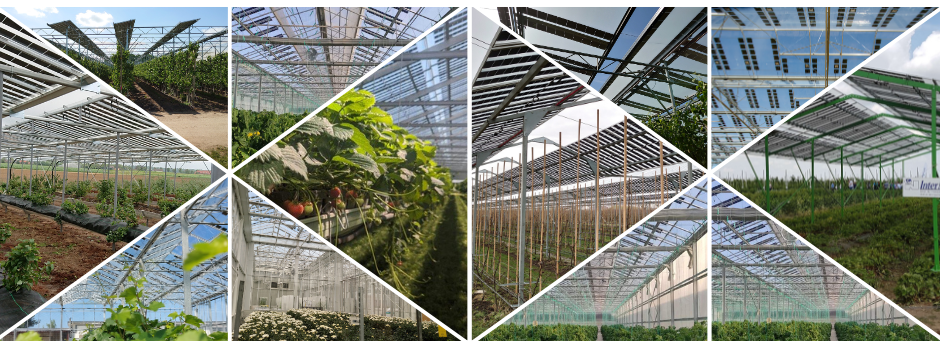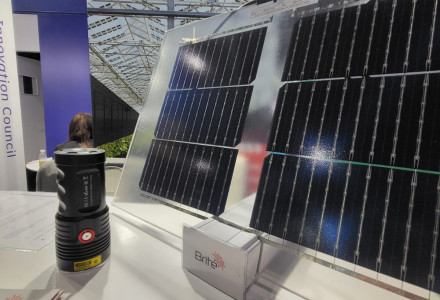Agrivoltaics: How They Benefit Farmers and the Climate
By Dimitris Bellos, 10/09/2024
Agrivoltaics, an innovative approach combining agriculture with solar energy production, is emerging as a comprehensive solution for modern farming and environmental sustainability. By installing photovoltaic panels on agricultural land, farmers can generate clean energy while continuing to cultivate their crops, thus maximizing land efficiency. This system offers significant benefits to farmers by meeting rising energy demands, protecting crops, and helping manage risks related to climate change.
What Are Agrivoltaics and How Do They Help Farmers?
Agrivoltaics refers to the installation of photovoltaic panels over agricultural land, allowing for both food cultivation and energy production simultaneously. According to research, this system can increase land productivity by up to 60%, making efficient use of the land for both agriculture and energy. In regions with abundant sunlight, agrovoltaics present an excellent opportunity to boost the economic sustainability of farming operations. Farmers can utilize the energy generated by the photovoltaic panels to power farm equipment, such as irrigation systems and machinery, reducing operational costs. Additionally, any surplus energy can be sold back to the grid, providing an extra source of income. Agrivoltaics also help protect crops from the impacts of climate change by offering shade, which reduces heat and helps maintain soil moisture.
The Importance of Agrivoltaics for Growing Energy Needs
Modern agriculture is becoming increasingly energy-dependent, as farmers use advanced technologies such as automated irrigation systems, electric tractors, and precision machinery. With the electrification of farming vehicles and the use of drones for crop management, the energy demands of farmers are expected to rise dramatically in the future. Agrovoltaic systems can meet these needs by providing farmers with a stable and renewable energy source.
The ability to produce electricity locally reduces reliance on fossil fuels and external energy grids, making farm operations more sustainable and cost-effective.
Crop Protection and Addressing Climate Change
Climate change poses growing challenges for farmers, as crops are increasingly affected by extreme weather events such as droughts, floods, and heatwaves. Agrovoltaics can help farmers protect their crops from these conditions by offering shade, which lowers soil temperatures and shields plants from excessive heat.
The shade provided by the panels also reduces water evaporation, helping to retain soil moisture and make irrigation more efficient. Additionally, agrovoltaic systems offer the possibility of rainwater collection, which farmers can use for targeted irrigation at the plant root, delivering the precise amount needed at the right time. This allows for more efficient use of water resources, particularly in areas where water is scarce.
Economic Sustainability and Payback
One of the greatest advantages of agrivoltaics is the rapid return on investment. Estimates suggest that the payback period for the energy generated by photovoltaic systems can be achieved in approximately four years. This calculation excludes additional significant benefits, such as crop protection and water savings, which contribute to the overall efficiency of the farming operation.
By creating a new revenue stream from the sale of produced energy and reducing energy costs, farmers can strengthen the financial stability of their operations. Moreover, the environmental benefits, such as reducing carbon emissions and minimizing the use of fossil fuels, enhance long-term sustainability and competitiveness for farmers.
The Role of the New Generation in Accelerating Agrivoltaics
The new generation of farmers and scientists, with their knowledge and eagerness for innovation, can play a crucial role in accelerating the adoption of agrovoltaic systems. Younger farmers are better equipped to recognize the potential of new technologies and sustainable practices and to drive change through partnerships with organizations and investors.
This generation can significantly influence decisions for immediate investments in agrivoltaics, ensuring that the agricultural sector capitalizes on the energy and economic opportunities offered by this technology. Their initiatives can lead to the faster implementation of agrovoltaic systems, speeding up the adoption of practices that benefit both production and the environment.
The Future of Agrivoltaics
As agrivoltaic technology continues to evolve, its integration into farming operations is inevitable. Farmers who invest early in this technology will reap the greatest benefits, taking advantage of long-term reductions in operating costs, increased crop productivity, and protection from extreme weather events.
Conclusion
Agrivoltaics offer a comprehensive solution to the energy, environmental, and economic challenges faced by the agricultural sector. With rapid payback periods, crop protection, water conservation, and environmental benefits, agrovoltaics have become an integral part of modern sustainable farming. Farmers who invest early in this technology will fully exploit its potential, contributing to environmental protection while maintaining and enhancing agricultural production.
Brite Solar: Innovation in Agrivoltaics for Sustainable Farming
Brite Solar, a Greek company, is pioneering the development and production of semi-transparent photovoltaics, tailor-made to meet the specific needs of farmers and agricultural operations. With its agrivoltaic technology, farmers can generate energy while simultaneously protecting and enhancing their crop production, offering significant economic and environmental benefits. Brite Solar is elevating the role of farmers, making agricultural enterprises more sustainable and competitive.
























